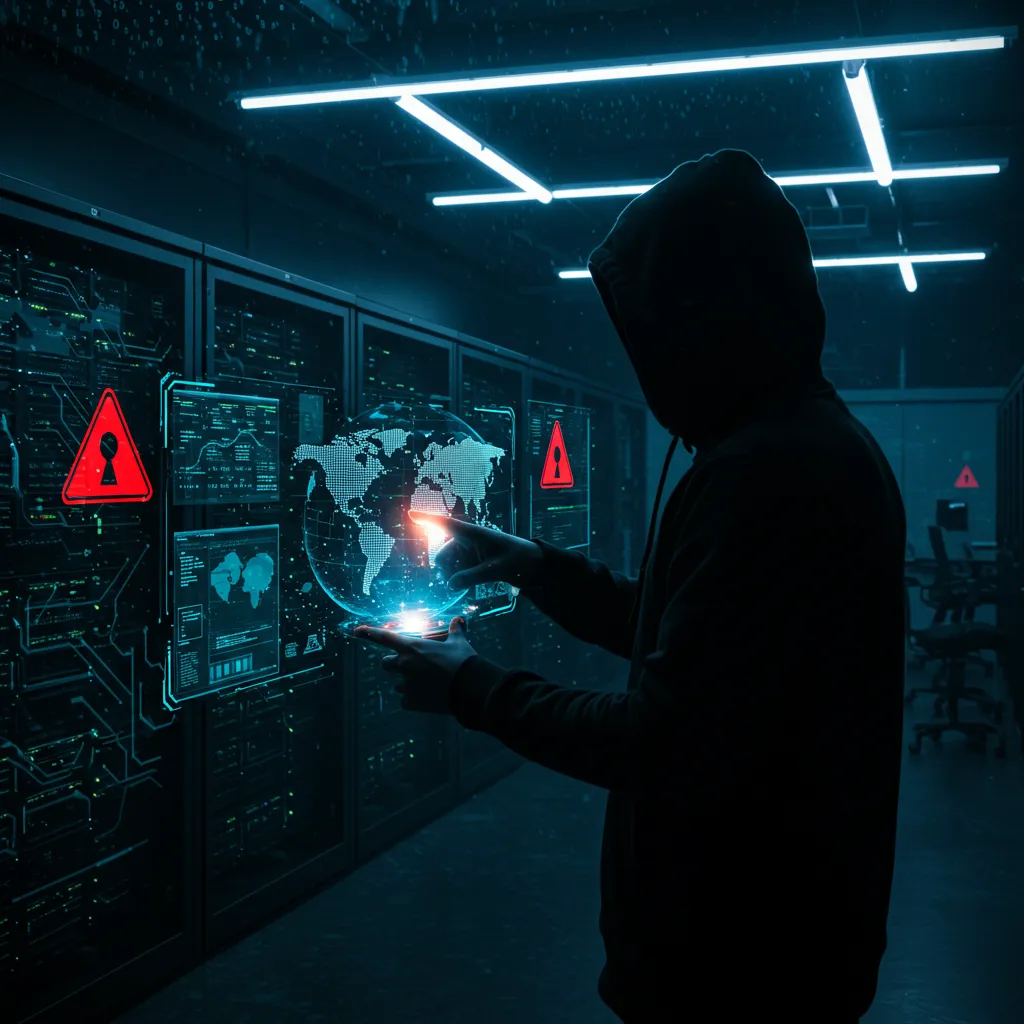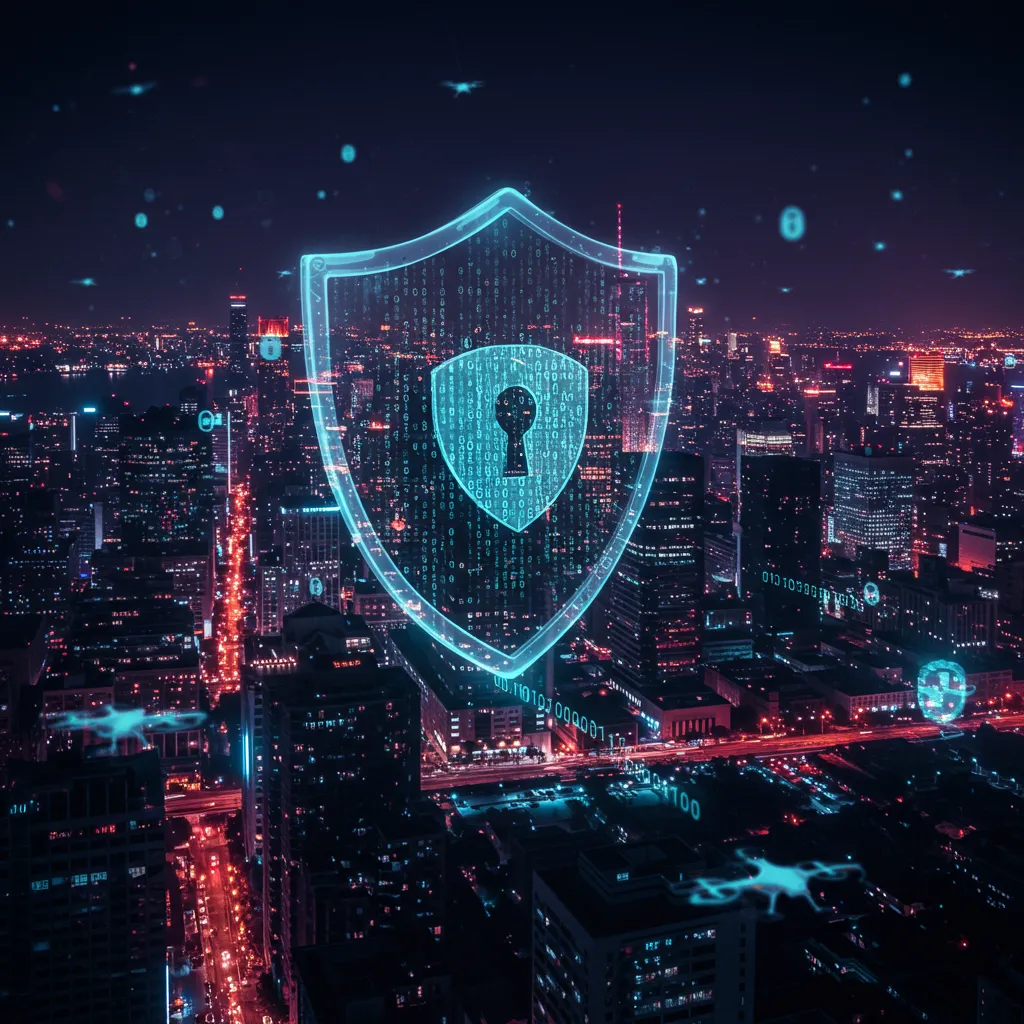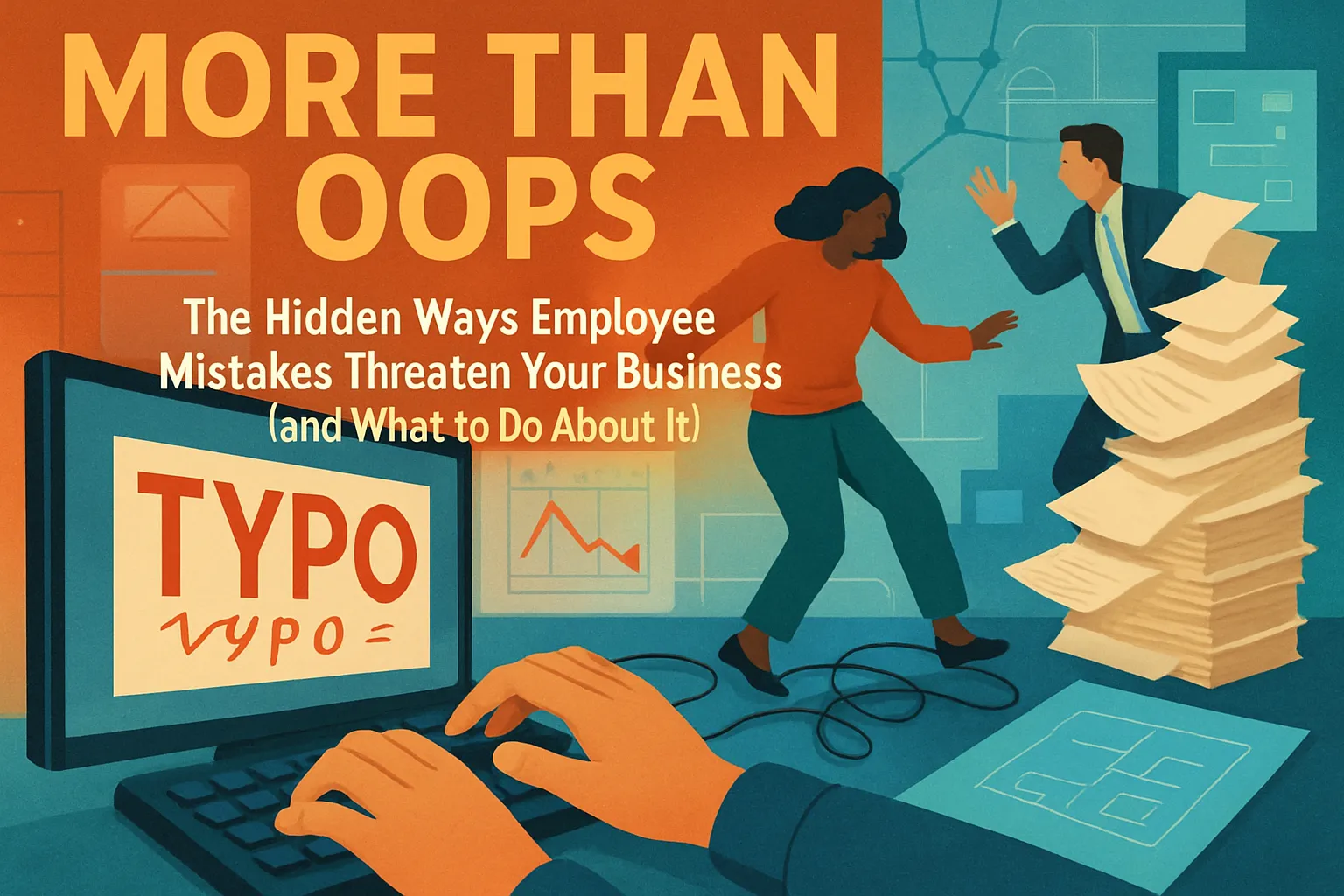Last Thursday, while locking up my family’s café after closing, my phone buzzed: an old college friend had just lost every customer record to a ransomware attack. His bakery, just across town, went from thriving to paralyzed overnight. Most people think cybercriminals go after big fish—but in 2025, the sharks are in the shallow end. The numbers don’t lie, but what they mean (and why they matter) is a whole other story—one small businesses can’t afford to ignore.
1. Cybersecurity Threats: The Foe No One Saw Coming
Cybersecurity threats have quietly become one of the most pressing issues for small businesses today. While headlines often focus on attacks against massive corporations, the reality is that small and medium-sized businesses (SMBs) are now prime targets. The days when only the Fortune 500 had to worry about hackers are long gone. In 2025, the landscape of Small Business Cybersecurity is more unpredictable—and dangerous—than ever.
Ransomware attacks and phishing scams have become the new normal on Main Street. Research shows that 82% of ransomware attacks in 2021 were against companies with fewer than 1,000 employees. That’s not just a blip—it’s a clear sign that cybercriminals are shifting their focus. Small businesses, often seen as having weaker defenses, are now the low-hanging fruit. In fact, 46% of all cyber breaches impact businesses with fewer than 1,000 employees. These aren’t just statistics; they represent real companies, real losses, and real disruption.
It’s easy to underestimate the risk. Many SMB owners believe that their size makes them invisible to hackers. However, the numbers tell a different story. 43% of all cyberattacks target small businesses. This isn’t about paranoia—it’s about facing facts. The digital world has changed, and so have the rules of engagement.
Why are small businesses so attractive to cybercriminals? The answer is simple: perceived vulnerability. Many SMBs lack dedicated IT teams or formal cybersecurity policies. Social engineering tactics, like phishing emails, are especially effective when staff aren’t trained to spot them. Ransomware attacks—where hackers lock up a company’s data and demand payment—can cripple operations overnight. For a small business, even a short disruption can be devastating.
A quote from Theresa Payton, former White House CIO, captures this shift:
‘Cybercriminals aren’t just targeting the big leagues—they’re coming for small businesses because they’re usually the easiest to crack.’
The impact of these Cybersecurity Threats goes beyond lost data. There’s the cost of downtime, the expense of recovery, and the damage to reputation. Studies indicate that the average cost of a small business data breach in 2025 is climbing, making prevention more important than ever.
Sometimes, the threat feels so real that it changes how businesses operate. Take, for example, a local bookstore owner who still uses pen and paper for transactions. At first glance, it might seem like nostalgia. But dig a little deeper, and there’s a story: after a colleague’s business was hit by ransomware, the owner decided that staying offline was the safest bet. It’s a small act of resistance in a world where digital convenience comes with hidden risks.
As Cybersecurity Statistics for 2025 continue to reveal, the threat landscape is evolving. Ransomware attacks and social engineering are no longer rare events—they’re the new reality for small businesses everywhere. The numbers are clear, but the real challenge is making sure every business owner takes them seriously.

2. Data Breach Dominoes: When One Falls, Who’s Next?
When it comes to Data Breach Statistics for small businesses, the numbers in 2025 are more than just alarming—they’re a wake-up call. The landscape has shifted, and the cost of breaches is no longer something only big corporations worry about. In fact, the average small business data breach now costs $120,000. For many family-owned shops or local service providers, that’s not just a setback; it’s a potential end to years of hard work.
Research shows that 60% of small businesses that suffer a cyberattack shut down within six months. It’s a statistic that’s hard to ignore. The aftermath of a breach goes beyond the immediate financial hit. There’s the loss of customer trust, a damaged reputation, and the very real possibility of never reopening. When a local business closes, it’s not just the owners and employees who feel the impact. The entire neighborhood can lose a gathering spot, a trusted service, or a piece of its identity.
Ransomware attacks are a particular threat. Studies indicate that ransomware costs small businesses an average of $35,000 per incident. For many, that’s more than a year’s profit wiped out in a single moment. And it’s not just about the ransom itself. There are costs tied to downtime, lost data, and the scramble to recover operations. Sometimes, the savings meant for growth or emergencies are gone overnight.
To put it in perspective, imagine your favorite neighborhood coffee shop. Maybe it’s the place where you grab your morning latte, catch up with friends, or get some work done. Now, picture what would happen if that shop suffered a data breach. Suddenly, your loyalty points are gone. Worse, your payment information might be exposed. The shop’s owners are left dealing with angry customers, potential legal issues, and a financial hole that’s hard to climb out of. Would you feel safe going back? Would the shop even survive the fallout?
It’s not just a hypothetical. According to recent data, 43% of all cyberattacks target small businesses, and 46% of breaches impact companies with fewer than 1,000 employees. The domino effect is real. One breach can disrupt a local economy, causing a ripple that spreads far beyond the initial victim. As cybersecurity journalist Brian Krebs puts it:
“The fallout from a single data breach can ripple across communities, not just companies.”
The numbers are clear. The cost of breaches is rising, and the risks are no longer abstract. For small businesses, a single successful attack can mean the difference between thriving and closing for good. The community impact is just as significant as the financial one, making cybersecurity a priority that can’t be ignored.

3. Cybersecurity Awareness: The Invisible Shield Too Many Forget
Cybersecurity Awareness is often described as the invisible shield for small businesses, yet it remains one of the most overlooked aspects of Small Business Cybersecurity. Despite the growing number of cyber threats, research shows that 80% of small businesses still do not have a formal cybersecurity policy in place as of 2025. This statistic alone highlights a major gap in preparedness, leaving many organizations exposed to significant Cybersecurity Risks.
It’s easy to assume that technology alone can protect a business, but the reality is more nuanced. Human error is frequently the weakest link. In fact, 30% of small business data breaches are tied directly to stolen credentials. This isn’t just a number—it’s a reflection of everyday habits and oversights. Consider the all-too-common scenario: a CEO, pressed for time, jots down her password on a sticky note and leaves it on her desk. It sounds almost cliché, but it’s a true story (names changed to protect the innocent). This simple act can open the door to attackers, no matter how robust the firewall or antivirus software may be.
“Security isn’t just a technical challenge—it’s a human one.”
– Bruce Schneier, security expert
This quote rings especially true for small businesses, where employees often wear multiple hats and cybersecurity training can feel like an afterthought. Many workers experience what could be called “training fatigue.” Why do people skip security seminars? Maybe it’s because they’re always scheduled during lunch, or perhaps the content feels repetitive and disconnected from daily tasks. Whatever the reason, the result is the same: gaps in Cybersecurity Awareness that attackers are all too ready to exploit.
The numbers are hard to ignore. With 80% of small businesses lacking a formal cybersecurity policy, and 30% of breaches linked to weak or stolen passwords, it’s clear that policy and education are as critical as any technical Cybersecurity Solutions. Yet, the human element—those everyday choices and habits—remains the most unpredictable factor. Passwords scribbled on sticky notes, reused across multiple accounts, or shared informally among team members, all contribute to a landscape where Cybersecurity Risks are amplified.
Anecdotes like the sticky note incident make these risks tangible. They serve as reminders that Cybersecurity Awareness isn’t just about compliance or ticking boxes—it’s about real people making real decisions, sometimes in a hurry, sometimes without understanding the consequences. And while technology continues to advance, the need for ongoing education and practical, relatable training remains as important as ever.
In the end, small businesses must recognize that Cybersecurity Awareness is not a one-time project, but an ongoing process. Policies, training, and a culture of vigilance are the invisible shields that can make all the difference in today’s digital landscape.

4. Cybersecurity Trends in 2025: Old Threats, New Tricks
Cybersecurity Trends in 2025 are shaping up to be a mix of the familiar and the unexpected. While some Cybersecurity Threats have been around for years, their methods are evolving, and the risks for small businesses are growing. The numbers are hard to ignore: research shows that 93% of company networks can be penetrated by hackers. That’s almost everyone. For small and midsize businesses (SMBs), the situation is even more concerning—75% of SMBs experienced at least one cyber attack in the past year. These Cybersecurity Risks are not just statistics; they’re a daily reality for organizations of all sizes.
One of the most persistent Cybersecurity Threats is social engineering. In 2025, it’s not just phishing emails or suspicious links. Attackers are using multi-stage attacks—layering tactics like phone calls, fake websites, and even impersonation to trick employees and bypass security controls. It’s a reminder that old tricks are getting new upgrades. The classic malware attacks haven’t disappeared either. Instead, they’re becoming more sophisticated, often hiding in plain sight or using legitimate tools to spread within networks.
For SMBs, the challenge is especially daunting. Studies indicate that 43% of all cyberattacks target small businesses, and the consequences can be severe. The average cost of a small business data breach in 2025 is estimated at $120,000, while ransomware incidents alone cost an average of $35,000 per attack. Yet, despite these risks, 80% of small businesses still do not have a formal cybersecurity policy. It’s a gap that attackers are eager to exploit.
What’s driving the surge in successful attacks? Part of the answer lies in the complexity of modern business networks. With more devices connected than ever—including everything from laptops to obscure IoT coffee machines—there are simply more doors for attackers to try. The question isn’t just “Will they get in?” but “Where will they strike next?” The idea of hackers targeting a smart coffee machine might sound far-fetched, but in 2025, it’s not entirely out of the question. Sometimes, the most unexpected entry points become the weakest links.
As Katie Moussouris, a noted cybersecurity expert, puts it:
'Cyber defenses are only as strong as their weakest point—which is too often overlooked.'
This reality is reflected in the numbers. Even as awareness of Cybersecurity Risks grows, the ability for hackers to penetrate nearly all networks illustrates the ongoing challenge. Attackers are adapting, and so must defenders. Multi-stage attacks, persistent malware, and the creative use of everyday technology all signal a need for constant vigilance.
Looking ahead, the unpredictability of Cybersecurity Trends keeps everyone guessing. Will attackers pivot to even more obscure devices? Will new forms of social engineering emerge? The only certainty is that the landscape will keep changing, and businesses—especially SMBs—will need to stay alert to both old threats and new tricks.
5. Building Smart Defenses: From Overwhelm to Action
For many small businesses, the world of cybersecurity can feel overwhelming. The statistics paint a stark picture: nearly half of all cyberattacks target small businesses, and the average cost of a breach is now $120,000. But while the risks are real, the path to better protection doesn’t have to be complicated or expensive. In fact, building smart defenses is less about grand gestures and more about consistent, practical steps.
Cybersecurity Awareness is the first step, but it’s not enough on its own. Knowing the risks is important, yet action is what actually prevents disaster. Research shows that 80% of small businesses still lack a formal cybersecurity policy, and 30% of breaches happen because of stolen credentials. These numbers highlight a simple truth: most threats exploit basic oversights, not sophisticated weaknesses.
So, what does action look like for small business cybersecurity in 2025? It starts with the basics. Regularly updating software may sound mundane, but it closes the door on many common attacks. Password managers help employees avoid the trap of reusing weak passwords, and two-factor authentication adds an extra layer of defense that’s surprisingly effective against credential theft. These are not high-cost, high-tech solutions—they’re accessible Cybersecurity Solutions that any business can implement.
The reality is, small businesses don’t need enterprise-level budgets to make meaningful progress. There are now free and affordable tools designed specifically for small business cybersecurity challenges. From automated patch management to cloud-based security suites, the market is full of options that balance cost and protection. The key is to start somewhere, rather than waiting for the “perfect” solution to arrive.
Nicole Perlroth, a respected cybersecurity reporter, puts it simply:
‘Small businesses can’t afford to wait for the perfect solution; doing something now is better than nothing.’
This mindset shift—from overwhelm to action—is what builds resilience. Cybersecurity, in many ways, is like flossing. It’s not glamorous, and it rarely feels urgent until something goes wrong. But those small, everyday habits are what keep the most painful problems at bay. Just as skipping flossing leads to bigger dental issues, ignoring basic cybersecurity practices can open the door to costly breaches.
Studies indicate that 61% of small and medium businesses were targeted by cyberattacks in 2021, and that number is only expected to rise. Yet, resilience isn’t about heroics or massive investments. It’s about building habits—regular updates, strong passwords, and ongoing Cybersecurity Awareness. These steps, repeated over time, create a strong defense that’s much harder for attackers to penetrate.
In the end, the most effective Cybersecurity Solutions for small businesses are the ones that get used. They’re the simple, practical measures that become part of the daily routine. By moving from awareness to action, small businesses can turn daunting cybersecurity challenges into manageable, everyday victories—one smart step at a time.
TL;DR: Small businesses are under growing cyber attack in 2025—statistics reveal high risks, costly breaches, and too many are still unprepared. Awareness, proactive security, and practical solutions are essential to avoid becoming the next data breach headline.



